#spirits risen festival 2022
Text
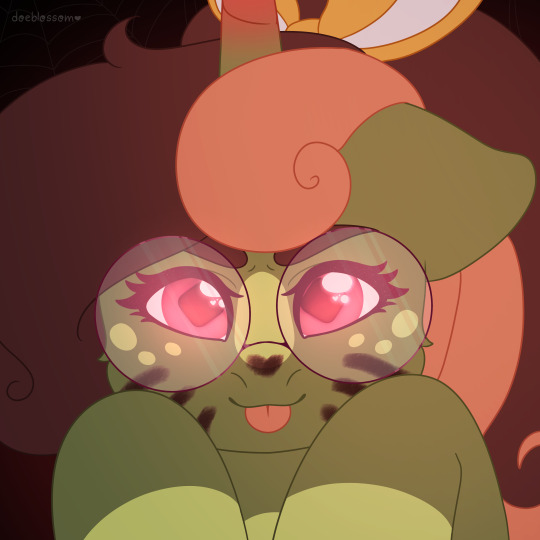
so unfortunately i can't draw that spirit's risen festival comic like i said. i can't for the life of me figure out the storyline, and this event i wanted to do with all 4 main characters while their relationships haven't developed enough yet!
so instead here's a little halloween profile pic. she's a bunny this year ^^

this is the full costume ! yes she was originally a fox but while redrawing it the outfit didnt feel very "her". its a big maybe if i'll enter that costume contest... but we'll see. if anyone was curious, borealis was going to be a vampire bat, jasper was going to be a lion, and asher was going to be a wolf! -Mod Doe <3
61 notes
·
View notes
Photo












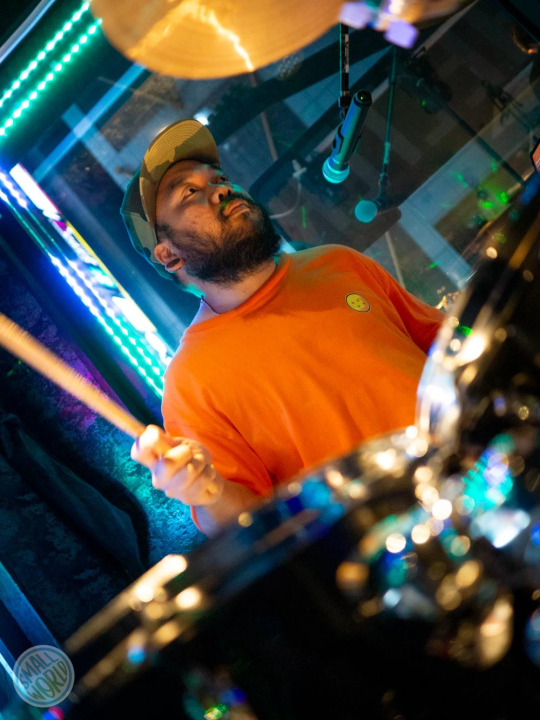



















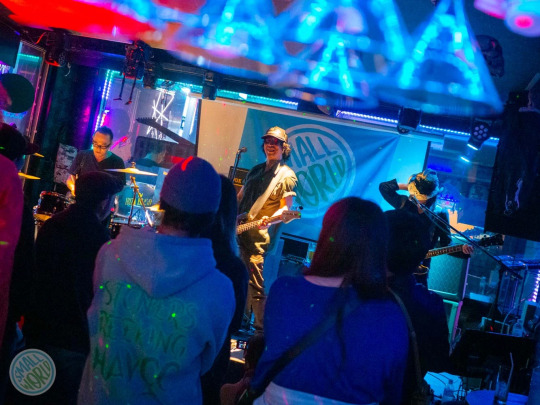
Been forgetting to share this here. Unfortunately, Shelter has now closed and this will be go down as the last event we got to throw there. Thanks for the memories. You’ll be remembered as one of the most badass venues in Nagoya for your true punk rock DIY spirit. Now, enjoy the read if you have time.
It’s that time of year. The leaves have fallen and the spirits have risen. We all look forward to that special part of the year when the dead may walk, and this year a very special tradition of Nagoya live music has been reanimated… HallowFest!
Due to the global pandemic, HallowFest has been dormant since it last took place in 2019. That particular edition featured the likes of TROYL, Ghost of Matsubara, Bend’s, Sugar Riser, and Mosaic. Originally intended as a fun Halloween-themed local show, it became dedicated to the headliner TROYL’s beloved bassist, Isamu, who had recently passed away. It remains one of the most packed and festive nights that Shelter Rock Bar has ever seen.
With COVID restrictions easing in 2022, Small World and Shelter felt it was time to bring the event back along with the original co-organizer Tom Fallon’s blessing. Joshidai is a notorious nexus of Nagoya’s nightlife where Shelter stands as one of very few rock bars. Though in a rock setting, HallowFest aims to showcase a variety of Nagoya’s finest local acts.
On this evening, the schedule was divided into two sections: three solo artists and three bands. With the solo artists playing first, the acts of this night showed us a range of heart-felt, comedic, and experimental tunes that Nagoya has to offer. Opening the show was Hiroki who welcomed the crowd with original acoustic songs draped over by his unique song-writing and signature voice.
Next was May Chu Chu, a comedy legend whose Small World debut was long overdue. Known by some as “Aimee Clark” or “that British lady who’s always on stage somewhere”, she had the house dying of laughter with her staple parody songs that cleverly present observations anyone living in Japan can relate to. May Chu Chu always delivers, not just in terms of funny songwriting, but she also proves her worth as a strong vocalist.
Rounding out the solo acts was S. Shah. Many might know Steven Shah as the guitarist and singer of the local psychedelic stoner rock band, Blasting Rod. Though he wasn’t with his full band tonight, he was armed with a special pedal board and Orange amp that filled the house with a wall of sound that took us on an abstract journey into our next section of the night.
To start off our chapter of live bands was Lostnote. Lostnote are a group of Filipino rock guys living in Aichi who have found a home at bars like Shelter doing what they love most, playing music. These pinoys had everyone smiling and grooving to reggae tunes for the first half of their set, until they kicked it up into sixth gear with some 90s rock covers. A moshpit even erupted as the crowd couldn’t hold back for “Enter Sandman”.
Following Lostnote was the sensational pop/R&B/soul group Cheapwine Squad who surprised everyone by showing up dressed as six different versions of Spider-Man. If you can recognize the different Spider suits, kudos to you. You’re a true nerd. They blew the roof off with a wide range of recognizable, fun covers as well as their new original tracks like “Do You Want a Good Time”.
Of course Shelter was most packed with the headliner Crocodile Bambie. Their sound can be described as progressive doom metal with dirty stoner rock riffs. They are one of the most legendary bands of the local Nagoya metal scene and they don’t play often. Singer and bassist Yoshi Yasui was just portrayed by actor Yuma Kato in a film across theaters called “鋼音色の空の彼方へ“, centered around the history of his other band Outrage. Some fans came as far as Yokohama and the band did not disappoint. Even though they played one man short of their usual four-piece, they delivered with their groovy licks, their classic fuzzy guitar tone, and their ever-precise musicianship. They proved this night as they do every other night why they are kings of the city.
The real winners of the night, though, were the audience who got to drink loads while meeting and mingling with one another and enjoying Shelter’s signature Brazilian cuisine. There were Japanese fans of live music along with an equal number of foreigners from all around the world there for a good time. Who do you want to see at HallowFest next year?
#hallowfest#crocodile bambie#cheap wine squad#lostnote#s. shah#may chu chu#haruki#live#doom metal#shelter#sakae#Nagoya#Japan
2 notes
·
View notes
Text
Epiphany 2 January 16th 2022 (Confession of St. Peter)
Old Testament: Isaiah 62:1-5
Psalm: Psalm 128
Epistle: 1st Corinthians 12:1-11 (Acts 4:8-13)
Gospel: John 2:1-11 (Mark 8:27-35)
Sermon Text: Mark 8:27-35
Sermon Title:
Grace to you and peace, from God the Father and our Lord and Savior, Jesus Christ. Amen.
Tomorrow (January 17th) is the churches celebration of the Confession of St. Peter. We don’t usually celebrate these festivals unless they fall on a Sunday, but there is some freedom for the pastor in choosing texts, and the account of Peter’s confession does not come up in the lectionary readings for this year, so hear again the opening line of the Gospel.
“Jesus went on with His disciples to the villages of Caesarea Philippi. And on His way, He asked His disciples, who do people say that I am”? (Mark 8:27) A rather important question, don’t you think? Of course, we heard about who He is in the Gospel accounts during the Christmas season. “You shall call His name Jesus, for He will save His people from their sins” and “unto you is born this day, in the city of David, a Savior who is Christ the Lord”. (Luke 2:11) That Jesus was the Christ was not yet known by the masses of people in Israel; though they did know Jesus was unique;
So, the disciples “told Him, (some say) John the Baptist and others say Elijah, and others one of the prophets”. (Mark 8:28) The crowds acknowledged that Jesus was a special messenger from God, but as to His true identity as the Christ, the Messiah, they did not yet know. Then “Jesus asked the disciples, but who do you say that I am”? (Mark 8:29a) Had the disciples figured out who Jesus was?
“Peter answered Him, You are the Christ (the Son of the living God)”. (Mark 8:29b) Peter had the right idea, the right answer to Jesus’ question. Jesus is the Christ, who has come to save the world; but as we will see in a moment, Peter and the rest of the disciples had the wrong idea about how this would work.
Later on, after Jesus’ death, bodily resurrection and ascension, the disciples begin to “get it” and are very bold in their proclamation of the Gospel. In the sermon before the Jewish council, after they had been arrested, “Peter, filled with the Holy Spirit said to them … this Jesus is the stone that was rejected by you the builders, which has now become the cornerstone. And there is salvation in no one else, for there is no other name under heaven, given among men, by which we must be saved”. (Acts 4:8a, 11-12)
But for now, even though Peter made this great confession, “You are the Christ”; he clearly did not understand what the Christ had come to do for the salvation of the world. “Jesus began to teach them that the Son of Man must suffer many things, and be rejected by the elders and the chief priests and be killed and after three days rise again. And Jesus said this plainly” (Mark 8:31-32a) So plainly, that it was not possible for them to misunderstand.
Peter certainly didn’t misunderstand what Jesus had said, but he clearly didn’t like it either. He knew that Jesus was the Christ, but he was just as sure that he would not accept a suffering Christ; that would be “crazy talk”. “And Peter took Jesus aside and began to rebuke Him” (Mark 8:32b) Peter expected and wanted a conquering, even war like Messiah, one who would set up God’s kingdom here on earth, and so he tries to silence Jesus. “This shall never happen to You Jesus”. (Matthew 16:22b)
“But turning and seeing His disciples; Jesus rebuked Peter and said, Get behind Me Satan! For you are not setting your mind on the things of God, but on the things of man”. (Mark 8:33) If Peter had had his way, Jesus would not have gone to the cross; which was absolutely necessary for us and our salvation.
If Jesus had not gone to the cross and risen from the dead for us, “we would still be in our sins”. (1st Corinthians 15:17b) Which is why Jesus’ rebuke of Peter in front of the other disciples was so harsh, so that they too would learn. The man who moments ago made a great confession of faith in the Christ, is now lumped in with Satan, when he tries to persuade Jesus to avoid suffering and the cross.
The same is true of us, whenever we stubbornly refuse to accept what God has spoken to us in His holy and precious Word. In those moments, we too need to be called to repentance or “rebuked” as the text today declares. This is what the true believer in Christ wants for their lives; to be conformed to the Word of God. Notice, Peter did not argue with Jesus; accepting His correction.
“And calling the crowds to Him, with His disciples, He said to them, If anyone would come after Me, let him deny himself and take up his cross and follow Me”. (Mark 8:34) There is no getting around it; If we follow Jesus, we will bear the cross for our faith. We, like Peter, may not like to hear this, but Jesus’ Word is clear, “whoever would save his life will lose it, but whoever loses his life for My sake and the Gospel’s, will save it”. (Mark 8:35)
Peter would learn this for himself from experience; being persecuted and eventually martyred for his faith in Christ. He would clearly proclaim the Christ powerfully and accurately to countless people before he died. The entire epistle of 1st Peter speaks to a church that is being attacked for their witness to Jesus Christ. Yet, in the midst of their difficult times, Peter speaks words of encouragement and exhortation to them.
First, Peter thanks God for the new life that He has created in his hearers through the Word of Christ. “According to His great mercy, He has caused us to be born again to a living hope, through the resurrection of Jesus Christ from the dead, to an inheritance that is imperishable, undefiled, and unfading; kept in heaven for you”. (1st Peter 1:3b-4) “We were ransomed … not with perishable things, such a silver or gold, but with the precious blood of Christ, like that of a Lamb without spot or blemish”. (1st Peter 1:18-19)
Because of the new life Christ has created in us, by grace through faith, Peter next exhorts us to holy living; “as He who called you is holy, you also must be holy in all your conduct”. (1st Peter 1:15) “Put away all malice … deceit … hypocrisy … envy … and all slander”. (1st Peter 2:1) “I urge you to … abstain from the passions of the flesh, which wage war against your soul”. (1st Peter 2:11b) “Be self-controlled and sober minded” (1st Peter 4:7a) and many others. This is how we are to live, even in the midst of rejection, suffering, and persecution.
As Jesus said, “If anyone would come after Me, let him take up his cross, deny himself and follow Me”. (Mark 8:34) Peter again declares “even if you suffer for righteousness’ sake, you will be blessed” (1st Peter 3:14) and “Do not be surprised at the fiery trial when it comes upon you … but rejoice insofar as you share Christ’s suffering” (1st Peter 4:12-13a) and “After you have suffered a little while, the God of all grace, who called you to His eternal glory in Christ, will Himself restore, confirm, strengthen and establish you”. (1st Peter 5:10)
Our crucified and risen Lord and Savior has given us many precious promises in His Word, that He “is with us always, even to the close of the age” (Matthew 28:20) and “I will never leave you, nor forsake you”. (Hebrews 13:5b) Knowing this, we confess with Peter, “You are the Christ, the Son of the living God” (Matthew 16:16b) and acknowledge before the whole world, “there is salvation in no one else, for there is no other name under heaven, given among men, by which we must be saved”. (Acts 4:12) Amen.
The peace of God …
0 notes
Text
VinePair Podcast: Making a Case for Alcohol Label Transparency
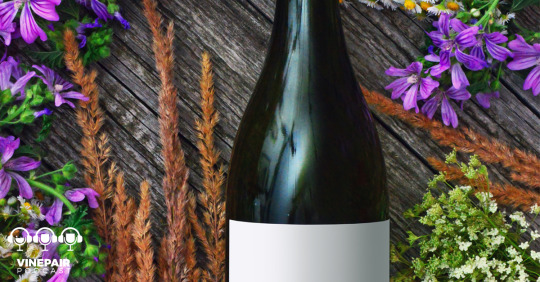
There’s an odd fact you might have noticed about beer, wine, and spirits. Unlike virtually every other consumable, the U.S. government does not require alcohol producers and manufacturers to disclose the ingredients or nutritional facts of their product. Furthermore, the number of beverage alcohol producers that do so voluntarily is vanishingly small. As with many alcohol-related laws, this labeling exemption dates back to the end of Prohibition. It persists because alcohol is not regulated through the Food and Drug Administration (FDA), but instead through the Alcohol and Tobacco Tax and Trade Bureau (TTB).
That lack of nutrition labeling has gone largely unchecked until now, when changes in the industry and interests of American consumers could very well bring the era of opacity to a close.
The rise of hard seltzer and its aggressively promoted low-cal, low-carb lifestyle have begun to force the hand of more traditional beverages like beer, while the “clean wine” movement attempts to capitalize on a lack of transparency in the wine industry. The European Union will require ingredient labeling by the end of 2022. Will these forces be enough to overturn decades of inertia? Will mandated labeling privilege large brands over small producers? That’s what Erica Duecy and Zach Geballe discuss on this week’s episode of the VinePair Podcast.
LISTEN ONLINE
Listen on Apple Podcasts
Listen on Spotify
OR CHECK OUT OUR CONVERSATION HERE
Zach: From Seattle, Washington, I’m Zach Geballe.
Erica: In Connecticut, I’m Erica Duecy.
Z: And this is the VinePair Podcast. Yes, we are without Adam but we are not without ads. This podcast is brought to you by Cognac USA, Speedrack, and VinePair. We’re collaborating to offer 10 $1,000 cash stipend prizes exclusively for professional bartenders. You can enter by creating an original Cognac cocktail and you can even receive bonus points through viewing Speedrack’s Instagram live videos. Visit cognacconnection.com, that’s cognacconnection.com, for details and to enter. The deadline is Aug. 31, and that’s cognacconnection.com. The campaign is financed with aid from the European Union.
Z: Erica, what’s your favorite Cognac cocktail?
E: That’s a good question. If I’m going to drink Cognac I’m probably going to drink it straight. It’s one of those things that if you really enjoy it, that’s one of the ones to savor.
Z: I think there’s a place for the higher end — and trust me, Cognac goes really high end really quick — but the higher-end stuff I wouldn’t mix in a cocktail. Sazerac, which is often traditionally made with Cognac, I think is a delicious cocktail. I’d be curious to hear your thoughts on this. A couple of years ago, I created a drink for our bar program at one of the restaurants that I was running and it was my take on Vieux-Carre, which is a split-base cocktail with Cognac and rye. I did that but instead of Bénédictine, it had Strega in it, but I think the Vieux-Carré is a fun one even if it’s not a pure Cognac cocktail.
E: That is a delicious cocktail. In the winter especially, I just really love the idea — even if I don’t have a fireplace — of sitting around the fire with a snifter of Cognac. But really, I just use a rocks glass.
Z: You’re telling me you don’t retire to your hunting lodge every winter?
E: I’m getting there, not quite yet.
Z: When this podcast finally blows up. I have another question for you before we get into today’s topic. We were debating what to discuss this week, and maybe we’ll get back to this in the future, but I was curious, you’re the parent of a couple of kids who are older than my son and right now, my son’s interaction with alcohol is basically learning a surprisingly large number of grape varieties because we teach them to him. His favorite is Roussanne, in case anyone is wondering. But how do your kids react to what you do for a living?
E: I think they think it’s pretty interesting, although my husband has an even more interesting job because he’s playing with clay all day, so nothing really can compare to that. However, they do seem to think that it’s interesting that I’m tasting a lot of wines and tasting spirits and thinking about cocktails, and sometimes making up recipes. … And people seem to get a lot of enjoyment when they’re at our house because I’m always whipping up something, I always love to have a special cocktail that I’m serving if people come over, or, I’m pouring wines. So I think parties at our house, and small gatherings, tend to be pretty festive. I’m always interested in, for example at the end of a meal, pulling out a couple of bottles of Armagnac or Cognac or something. So people are always tasting and testing and talking about it. And the girls do love smelling in the glass. I think one of my proudest moments was when my daughter Gia was about 6 years old and I asked her to smell into the glass of sherry, and she told me that it smelled like nuts! I was so proud of her, and she was very quizzically looking at me like, “Yeah, it tastes like nuts.”
Z: That’s awesome. I can’t believe this never occurred to me before but it feels like the final form of yours and John’s relationship is opening the world’s fanciest pottery, painting, and wine sipping extravaganza. I’m sure you have seen those advertised, [where you] go paint some pottery and sip wine, but yours would be the fanciest of them all.
E: That’s pretty much our house all the time. They tend to have a good time, and we do open up the studio and have little parties up there when we’re not in a social distancing period — and so they are playing with clay and I’m making cocktails. I love to do a Spritz bar when we’re up there. There’s a lot of fun stuff to do and for kids, they’re pretty young so we’re not talking too much about responsibility around alcohol yet. I don’t think they’re quite there yet from a standpoint of really understanding the depth and nuance of that. But certainly, we do not have any sloppy behavior around them. I think that’s our way of presenting what alcohol looks like when consumed in a responsible manner.
Z: That is good. As you probably know, the sloppiness is a trickier thing to manage when you have a young child. There’s no way that goes well for anyone, even if you were tempted to do it. Dealing with a 2-year-old with a hangover is really miserable. Been there once or twice, sadly.
E: Exactly. I’m getting a little old for hangovers, I think.
Z: This would have been a natural segue if we were talking about hangover-free wine, but we are going to be in that general vein, so we might as well move on to the topic for today’s show. I think this is a really fascinating conversation that, hopefully, we’re going to have here, which is about the increased scrutiny potentially being paid to not just wine but all beverages and labeling. Erica, I think you could set the ground a little bit better than I can in this context. I’ll just say, one of the things that are important to understand as we get into this conversation is that in the United States, alcohol has traditionally been exempted from the rules that surround most other consumable products in terms of the requirement to disclose nutritional facts and ingredients. And there’s a real conversation going on in the industry about whether it’s time to give up that special exemption and be more upfront about what is in a bottle or can.
E: I think one of the big things that we need to realize is that virtually everything you can buy at a grocery store or in any other part of your life — at chain restaurants, for example — everything comes with a nutrition label these days. At chain restaurants, you have calories listed on menus, on the soda you’re drinking, any sort of other drinks, except for alcohol, it’s labeled. Why is alcohol exempt? The short answer here is that it’s a legacy of Prohibition. Alcoholic beverages aren’t regulated by the FDA, like everything else, but instead by the TTB, the Alcohol and Tobacco Tax and Trade Bureau, and they don’t require nutritional labeling. Consumer advocates have been pressuring the agency for years to add this labeling but it never seems to happen. Most recently, last year the modernization of the labeling and advertising regulations for wine, distilled spirits, and malt beverages Notice No. 176 was up for review and they did make some changes to the laws around labeling, but it did not concern nutritional labeling. The TTB said in April of this year that they will revisit those labels at a later time. But I think the real thing that we’re finding is that consumers want to know what they’re drinking and because we have created this environment of opaqueness around what is in the bottle across beer, wine, and spirits, that’s done two things. First, it’s turned many consumers off of these products onto other categories. Hard seltzer is one that has adequate product labeling, and I think that is one of the things that has really led to the rise of hard seltzer. Second, there have also been these dubious marketers, these clean wine marketers, these fitness marketers, making all sorts of claims about their wines that are verifiably false that we have fact-checked and have published articles about. Yet it’s because of this environment of opaqueness that those claims have now risen up.
Z: I think this is something that maybe more people in the beverage and alcohol space should have seen coming: That if you’re not transparent, people will use that lack of transparency against you. Whether they’re doing so dishonestly or not, it doesn’t really seem to matter. You pointed out this whole issue with clean wine companies and this has come up a few times in the past, but as one of the people who wrote one of those articles, I will say that it was remarkable going down this rabbit hole of what some of these claims that are made, and really a lot of it is an implication that “our wine doesn’t have these ingredients in it, we don’t use these additives,” so, therefore, your inference as a consumer, especially not a super well-informed one, is “everyone else must be using these.” Because if you’re making a point to say “we don’t put ferrocyanide in our wines,” which no one does, it’s not even allowed anymore, I don’t want that and the implication is that every other wine has that. But again this is where wine, beer, and spirits have made themselves vulnerable. I will say one of the things that I really want to get into in this conversation, and Erica, I’m curious [about] your thoughts on it: I do think there is a fundamental difference between wanting labeling that gives consumers actionable information, like how many calories in a serving, versus information that I’m not sure is all that useful. One of the wineries that does label in terms of ingredients is Ridge. Ridge is a great winery and makes exceptional wine, but if you look at that label, I think even for a wine professional, it’s pretty opaque. You have to know a lot about how wine is made to understand if what they’re talking about here is normal. Is it reasonable that they add nutrients to the yeast? Or is it normal to water wine down? For me or you as professionals, those words mean something, but to a consumer I’m not sure that a list of ingredients is going to help them at all. Maybe it will, but I think the calorie thing is one side and the specifics about what is in the products are another.
E: From my perspective, I think that as much transparency as possible is the way to go, and it’s really about educating consumers. The reason that I am for more transparency is that what you don’t say can be used against you. A good example from Ridge would be calcium carbonate. People might not know what calcium carbonate is, and they may want to look it up or go to Ridge’s website where you can see that it’s saying small additions of this compound are used during fermentation to moderate unusually high natural acidity. So I think if you give an explanation and you are stating why something would be used in a wine, then that takes away the ability of marketers to use it against you. I think that’s the unintended, unrecognized thing that people in the industry just didn’t anticipate. I think people in the industry thought for a long time it’s not going to be a good idea for us to label because if we start putting calorie counts on things, then people will drink less. There are also practical concerns for winemakers around cost. Having to test all these bottles every vintage has a cost to it. But when you don’t do those things, that’s when you’re opening yourself up for bigger problems where these unscrupulous marketers come in and start to take all of your business away because they’re saying “we don’t do all of these shady things,” when really not much of what is happening is very shady at all.
Z: I think it’s also important, as much as possible, to differentiate between two important things with ingredient labeling. It’s sometimes muddied in even professionals’ minds, let alone consumers’ minds, the unfortunate history of wine, if you stretch back far enough, with things being added to wine or wine being adulterated in various ways that were not only disingenuous — producers in Burgundy blending in Rhône wine or North African wine to bulk their wines out, the same thing with producers in Bordeaux, to the Austrian scandal of glycerol in wines in the mid-’80s. And these are things where the additives can be potentially toxic or harmful. With modern winemaking, the area we’re talking about most often is pesticide residues in wine, that being a relatively small concern with most wine but it is a possibility and something I think I understand people’s interest in knowing whether that’s something that could possibly be in their wine, versus a lot of the additives, even the ones that wine connoisseur might turn their nose up. Like mega purple, which gets a terrible rap, and I think there’s a philosophical issue with using grape concentrate to make your wine seem more colorful and richer in flavor, but it’s not at all harmful. It doesn’t hurt people and it’s probably the only way that a $5 bottle of California Cabernet can make it to a store shelf. I don’t personally have a lot of issues with it like “this is bad for the public.” I think if it was disclosed on the label it might change people’s purchasing decisions, which probably is a good thing, but I guess I think that is important to understand what information we are trying to provide to people and how that will affect things. Anything that involves a potential health risk is hugely important to disclose. I’m not saying that I don’t think winemakers should be forced to disclose when they modify their wine in a variety of wines, but I think it’s important to also push back on the notion that doing that is harmful. It might not represent the pinnacle of winemaking, but it’s not bad for you in any real way.
E: That’s true. And I think it is a reality that people do not have any idea how many calories are in the alcohol that they’re drinking. I was looking at some different studies, and one public health researcher found that most Americans are drinking 400 calories a day of alcohol. When you think of an average glass of beer or wine it’s probably around 150 calories, and it’s much more for cocktails, so I think there’s a health concern that is legitimate — of people wanting to know how many calories are in their wine — and that’s why these hard seltzers and RTDs have been so successful. Certainly there’s the convenience as the appeal, but secondarily, you can really keep track of how much you’re drinking. If you look at a lot of the different surveys that have been done about labeling, you’ll see the Center for Science in the Public Interest, they say 94 percent of adults support alcohol content labeling, 91 percent support ingredient labeling, 89 percent support calorie labeling. These things are going to be coming up more and more. And the brands that get on board quicker with transparency are going to be the successful ones. Just looking at the E.U., for example, in the European Union by the end of 2022, you have to provide nutrition and ingredient information if you’re going to be doing business in those countries. Already there, Diageo, Treasury, AB InBev, have already started to provide ingredient and nutritional information on a voluntary basis before that date on a lot of their products. This is going to become a bigger and bigger issue, especially at the end of 2022 [when] it is required. I think then, a lot more American consumers are going to be requesting and requiring this. Additionally, I think that the brands that do get ahead of this are going to see better sales results. It may sound counterintuitive to say that if people are looking at the calories and ingredients, they’ll choose my product over another, but I really do think it will happen because it’s that type of transparency that has proven so effective for these clean wine marketers. When I say “transparency” let me put that in air quotes because certainly what they are doing is not transparency, it is pseudoscience and pseudo-transparency, but they are coming across as the ones who are taking the high road on this and providing that type of information that consumers are looking for. So once brands that have integrity and are doing marketing on the up and up are providing this level of transparency to their products, it’s going to take the wind out of the sails of a lot of the clean marketers and fitness marketers whose claims will no longer stand up.
Z: I think it’s interesting to think about who will benefit in a landscape where ingredient and nutritional fact labeling is a staple of the alcohol industry. My concern, and you mentioned this a little bit in the past, was that it will disproportionately advantage big companies. You mentioned the big multinationals that are already doing this on a voluntary basis in the E.U., as you said, getting this kind of testing done is not free and it may not even be cheap. If you’re a small winemaker, a relatively small winery, brewery, or distillery, that added cost you would have to weigh the benefit it might derive from the cost it will inflect, and each producer will make their own decision about that. It’s one thing for a big multinational to have its own lab where it can easily do this as part of everything else that they do as part of the business. I’m concerned that this will disproportionality benefit the companies that really don’t need more help at the moment, and also, the other question I am curious to hear your thoughts on is, people say they want ingredient and calorie count labeling, but how much of that 90-ish percent of the population will those numbers actually drive behavior? I think there’s a lot of people who would say, and do say, they want calorie counts on fast food menus but when they go through the drive-thru does that calorie count affect their purchase decision at all? Maybe at the margins, but most people are going to get a Big Mac regardless of whatever the calorie count says, if that’s what they want. So I think that… it doesn’t hurt anyone to have that information in the abstract, but I am dubious that for most consumers they’re going to pick up three bottles of wine or three beers and the determining factor is going to be the calorie count. I think it’s going to be what it tends to be already, which is, what does the label look like? What does it say on the front label? What is the price? That’s going to be how people make their decisions, and maybe calorie count is the tiebreaker for some people, and so fair enough. But I think, as you said, the other thing about this is, there’s not a big difference in a lot of these categories. Most dry wine is going to be in the same narrow range of calories per serving. Beer has a bigger range because of differing levels of alcohol — much more so than wine — spirits to some extent as well, but I think — it’s not a bad thing — but I’m not sure it’s going to be the holy grail of consumer independence and freedom that we might sometimes think it is.
E: For the concern about wineries having to do it every year, I would say that there very well could be some sort of compromise. For example, back in 2017 when the FDA was requiring menu labeling, the Brewers Association said it’s going to be a huge burden on small craft producers to be able to do these calorie counts, so what if we work with the FDA to create some sort of guidelines on what is acceptable around these categories of beer styles instead of individual breweries having to do it themselves, and the FDA agreed. So there are workarounds. I think what if they TTB said, what if you have to do it every five years for your wines. That makes it much more manageable so I think there could be ways around having to test wines every single year. Or maybe it’s when a new product comes onto the market, and every year the alcohol changes by more than a percent and a half, I don’t know what it is but something like that could work. To the second point, I think for the people that are making decisions based on calorie counts, they’re doing that already and they’ve already turned off wine. I was just on Twitter with someone today who sent me a photo of a brand called Fit Wine and it was marketing on calories and I was joking and saying it’s essentially the Walking Dead. These brands are coming out of the woodwork, get your swords ready, you need to be like Daryl Dixon out there slaying zombies because they are coming out of the woodwork and if the TTB does not step in it’s only going to get worse. But the bigger point is we’ve already lost the people that are making these calorie count decisions. If their decisions on what they purchase are based on what’s on the label, they haven’t been purchasing wine but maybe they will come back to wine if they do see calorie counts on there. That would be my perspective. I think these sunshine initiatives that shed light on where there is opaqueness there may be some skeletons in the closet but probably not that many and when you are being more transparent and providing consumers with a level of transparency there’s so much evidence to show that’s what consumers are looking for and I think that is the way of the future for wine, beer, and spirits
Z: I’m a bit mixed in my thoughts on this. This comes back to the conversation about ingredient labeling about healthy wine and products and I think to some extent a thing that gets missed is that alcohol is not inherently a particularly healthy thing. I think that there are ways to which alcohol consumption can be a part of a generally healthy lifestyle but the idea that alcohol consumption is the healthy part of your lifestyle is a ridiculous claim and is the thing that TTB and others need to push back against. Anyone that is attempting to intimate or flat-out state that somehow drinking these wines are somehow good, the whole French paradox, the Mediterranean diet, there’s a lot of pseudoscience in there. And the reality is alcohol is delicious in many cases, its enjoyable, the effect it has on our brains is something that most people find enjoyable at lower levels but is not inherently healthful and so I recoil at the idea that what we should be trying to do is designing products that have a label that makes people want to buy them but it is this idea of Frankensteining a product that gets you below a certain calorie count and doesn’t use certain ingredients but is so divorced from what to me is the pleasurable part of drinking which is not just taste but also the idea of some sense of a through line from a place to a beverage. I just worry that we’re going to end up in this sort of endless quest to create this lowest calorie whatever with the fewest ingredients that has some flavor but really is just an engineered product that meets market demand. And I’m not naive, there’s a lot of wines, beers, and spirits out there that do exactly that and some are delicious and they have a place for sure, but I worry — and in wine in particular — if too much embrace of transparency ends up privileging those where all they have is transparency, there’s nothing there. It’s just a clear window into a factory or something.
E: I think that’s a fair concern and from my perspective, I don’t want to drink those wines but I also don’t want to eat fat-free chips or sugar-free cookies. I am a consumer that loves full fat, full-flavored, give me all the promenades, give me all the backstory, that’s the type of consumer I am, but I think I’m unfortunately less and less the consumer who is looking for all of that full-fat, full-experience type thing. I think it’s just a reality of where we are in the consumer landscape that every other category has some degree of label transparency and this category does not and now it’s being used against the category and consumers are turning off. So I come to this argument as someone who loves the wine industry and the spirits industry, beer I know less about, but wine, in particular, I am legitimately concerned about the future of the wine industry. If some degree of labeling transparency does not become more embraced voluntarily, or enforced if that’s what it needs to be, then more and more consumers are going to turn off of this category because that’s what they expect.
Z: I think I can’t and don’t want to argue against that. It’s an unfortunate reality but that’s what it is. Before we go I’m going to read our Cognac Connection ad one more time. If you are a professional bartender and are interested in entering the Cognac Connection challenge you can win a $1,000 cash stipend. The deadline to do so is Aug. 31 and to do that you go to cognacconnection.com to enter you can also find more details there. Erica, we made it through without Adam. Somehow I feel like we didn’t even mention Seattle until the last minute. He’s going to be so disappointed, I’ll edit in some random clips of us saying Seattle and talking about the weather just to keep up appearances. Adam will be back next week from his well-earned vacation and we will be back waiting for you then. Talk to you later.
E: Talk to you then!
Thanks so much for listening to the VinePair Podcast. If you enjoy listening to us every week, please leave us a review or rating on iTunes, Stitcher, Spotify, or wherever it is that you get your podcasts. It really helps everyone else discover the show. Now, for the credits. VinePair is produced and hosted by Zach Geballe, Erica Duecy, and me: Adam Teeter. Our engineer is Nick Patri and Keith Beavers. I’d also like to give a special shout-out to my VinePair co-founder Josh Malin and the rest of the VinePair team for their support. Thanks so much for listening and we’ll see you again right here next week.
Ed. note: This episode has been edited for length and clarity.
The article VinePair Podcast: Making a Case for Alcohol Label Transparency appeared first on VinePair.
source https://vinepair.com/articles/alcohol-label-transparency/
0 notes
Text
VinePair Podcast: Making a Case for Alcohol Label Transparency

There’s an odd fact you might have noticed about beer, wine, and spirits. Unlike virtually every other consumable, the U.S. government does not require alcohol producers and manufacturers to disclose the ingredients or nutritional facts of their product. Furthermore, the number of beverage alcohol producers that do so voluntarily is vanishingly small. As with many alcohol-related laws, this labeling exemption dates back to the end of Prohibition. It persists because alcohol is not regulated through the Food and Drug Administration (FDA), but instead through the Alcohol and Tobacco Tax and Trade Bureau (TTB).
That lack of nutrition labeling has gone largely unchecked until now, when changes in the industry and interests of American consumers could very well bring the era of opacity to a close.
The rise of hard seltzer and its aggressively promoted low-cal, low-carb lifestyle have begun to force the hand of more traditional beverages like beer, while the “clean wine” movement attempts to capitalize on a lack of transparency in the wine industry. The European Union will require ingredient labeling by the end of 2022. Will these forces be enough to overturn decades of inertia? Will mandated labeling privilege large brands over small producers? That’s what Erica Duecy and Zach Geballe discuss on this week’s episode of the VinePair Podcast.
LISTEN ONLINE
Listen on Apple Podcasts
Listen on Spotify
OR CHECK OUT OUR CONVERSATION HERE
Zach: From Seattle, Washington, I’m Zach Geballe.
Erica: In Connecticut, I’m Erica Duecy.
Z: And this is the VinePair Podcast. Yes, we are without Adam but we are not without ads. This podcast is brought to you by Cognac USA, Speedrack, and VinePair. We’re collaborating to offer 10 $1,000 cash stipend prizes exclusively for professional bartenders. You can enter by creating an original Cognac cocktail and you can even receive bonus points through viewing Speedrack’s Instagram live videos. Visit cognacconnection.com, that’s cognacconnection.com, for details and to enter. The deadline is Aug. 31, and that’s cognacconnection.com. The campaign is financed with aid from the European Union.
Z: Erica, what’s your favorite Cognac cocktail?
E: That’s a good question. If I’m going to drink Cognac I’m probably going to drink it straight. It’s one of those things that if you really enjoy it, that’s one of the ones to savor.
Z: I think there’s a place for the higher end — and trust me, Cognac goes really high end really quick — but the higher-end stuff I wouldn’t mix in a cocktail. Sazerac, which is often traditionally made with Cognac, I think is a delicious cocktail. I’d be curious to hear your thoughts on this. A couple of years ago, I created a drink for our bar program at one of the restaurants that I was running and it was my take on Vieux-Carre, which is a split-base cocktail with Cognac and rye. I did that but instead of Bénédictine, it had Strega in it, but I think the Vieux-Carré is a fun one even if it’s not a pure Cognac cocktail.
E: That is a delicious cocktail. In the winter especially, I just really love the idea — even if I don’t have a fireplace — of sitting around the fire with a snifter of Cognac. But really, I just use a rocks glass.
Z: You’re telling me you don’t retire to your hunting lodge every winter?
E: I’m getting there, not quite yet.
Z: When this podcast finally blows up. I have another question for you before we get into today’s topic. We were debating what to discuss this week, and maybe we’ll get back to this in the future, but I was curious, you’re the parent of a couple of kids who are older than my son and right now, my son’s interaction with alcohol is basically learning a surprisingly large number of grape varieties because we teach them to him. His favorite is Roussanne, in case anyone is wondering. But how do your kids react to what you do for a living?
E: I think they think it’s pretty interesting, although my husband has an even more interesting job because he’s playing with clay all day, so nothing really can compare to that. However, they do seem to think that it’s interesting that I’m tasting a lot of wines and tasting spirits and thinking about cocktails, and sometimes making up recipes. … And people seem to get a lot of enjoyment when they’re at our house because I’m always whipping up something, I always love to have a special cocktail that I’m serving if people come over, or, I’m pouring wines. So I think parties at our house, and small gatherings, tend to be pretty festive. I’m always interested in, for example at the end of a meal, pulling out a couple of bottles of Armagnac or Cognac or something. So people are always tasting and testing and talking about it. And the girls do love smelling in the glass. I think one of my proudest moments was when my daughter Gia was about 6 years old and I asked her to smell into the glass of sherry, and she told me that it smelled like nuts! I was so proud of her, and she was very quizzically looking at me like, “Yeah, it tastes like nuts.”
Z: That’s awesome. I can’t believe this never occurred to me before but it feels like the final form of yours and John’s relationship is opening the world’s fanciest pottery, painting, and wine sipping extravaganza. I’m sure you have seen those advertised, [where you] go paint some pottery and sip wine, but yours would be the fanciest of them all.
E: That’s pretty much our house all the time. They tend to have a good time, and we do open up the studio and have little parties up there when we’re not in a social distancing period — and so they are playing with clay and I’m making cocktails. I love to do a Spritz bar when we’re up there. There’s a lot of fun stuff to do and for kids, they’re pretty young so we’re not talking too much about responsibility around alcohol yet. I don’t think they’re quite there yet from a standpoint of really understanding the depth and nuance of that. But certainly, we do not have any sloppy behavior around them. I think that’s our way of presenting what alcohol looks like when consumed in a responsible manner.
Z: That is good. As you probably know, the sloppiness is a trickier thing to manage when you have a young child. There’s no way that goes well for anyone, even if you were tempted to do it. Dealing with a 2-year-old with a hangover is really miserable. Been there once or twice, sadly.
E: Exactly. I’m getting a little old for hangovers, I think.
Z: This would have been a natural segue if we were talking about hangover-free wine, but we are going to be in that general vein, so we might as well move on to the topic for today’s show. I think this is a really fascinating conversation that, hopefully, we’re going to have here, which is about the increased scrutiny potentially being paid to not just wine but all beverages and labeling. Erica, I think you could set the ground a little bit better than I can in this context. I’ll just say, one of the things that are important to understand as we get into this conversation is that in the United States, alcohol has traditionally been exempted from the rules that surround most other consumable products in terms of the requirement to disclose nutritional facts and ingredients. And there’s a real conversation going on in the industry about whether it’s time to give up that special exemption and be more upfront about what is in a bottle or can.
E: I think one of the big things that we need to realize is that virtually everything you can buy at a grocery store or in any other part of your life — at chain restaurants, for example — everything comes with a nutrition label these days. At chain restaurants, you have calories listed on menus, on the soda you’re drinking, any sort of other drinks, except for alcohol, it’s labeled. Why is alcohol exempt? The short answer here is that it’s a legacy of Prohibition. Alcoholic beverages aren’t regulated by the FDA, like everything else, but instead by the TTB, the Alcohol and Tobacco Tax and Trade Bureau, and they don’t require nutritional labeling. Consumer advocates have been pressuring the agency for years to add this labeling but it never seems to happen. Most recently, last year the modernization of the labeling and advertising regulations for wine, distilled spirits, and malt beverages Notice No. 176 was up for review and they did make some changes to the laws around labeling, but it did not concern nutritional labeling. The TTB said in April of this year that they will revisit those labels at a later time. But I think the real thing that we’re finding is that consumers want to know what they’re drinking and because we have created this environment of opaqueness around what is in the bottle across beer, wine, and spirits, that’s done two things. First, it’s turned many consumers off of these products onto other categories. Hard seltzer is one that has adequate product labeling, and I think that is one of the things that has really led to the rise of hard seltzer. Second, there have also been these dubious marketers, these clean wine marketers, these fitness marketers, making all sorts of claims about their wines that are verifiably false that we have fact-checked and have published articles about. Yet it’s because of this environment of opaqueness that those claims have now risen up.
Z: I think this is something that maybe more people in the beverage and alcohol space should have seen coming: That if you’re not transparent, people will use that lack of transparency against you. Whether they’re doing so dishonestly or not, it doesn’t really seem to matter. You pointed out this whole issue with clean wine companies and this has come up a few times in the past, but as one of the people who wrote one of those articles, I will say that it was remarkable going down this rabbit hole of what some of these claims that are made, and really a lot of it is an implication that “our wine doesn’t have these ingredients in it, we don’t use these additives,” so, therefore, your inference as a consumer, especially not a super well-informed one, is “everyone else must be using these.” Because if you’re making a point to say “we don’t put ferrocyanide in our wines,” which no one does, it’s not even allowed anymore, I don’t want that and the implication is that every other wine has that. But again this is where wine, beer, and spirits have made themselves vulnerable. I will say one of the things that I really want to get into in this conversation, and Erica, I’m curious [about] your thoughts on it: I do think there is a fundamental difference between wanting labeling that gives consumers actionable information, like how many calories in a serving, versus information that I’m not sure is all that useful. One of the wineries that does label in terms of ingredients is Ridge. Ridge is a great winery and makes exceptional wine, but if you look at that label, I think even for a wine professional, it’s pretty opaque. You have to know a lot about how wine is made to understand if what they’re talking about here is normal. Is it reasonable that they add nutrients to the yeast? Or is it normal to water wine down? For me or you as professionals, those words mean something, but to a consumer I’m not sure that a list of ingredients is going to help them at all. Maybe it will, but I think the calorie thing is one side and the specifics about what is in the products are another.
E: From my perspective, I think that as much transparency as possible is the way to go, and it’s really about educating consumers. The reason that I am for more transparency is that what you don’t say can be used against you. A good example from Ridge would be calcium carbonate. People might not know what calcium carbonate is, and they may want to look it up or go to Ridge’s website where you can see that it’s saying small additions of this compound are used during fermentation to moderate unusually high natural acidity. So I think if you give an explanation and you are stating why something would be used in a wine, then that takes away the ability of marketers to use it against you. I think that’s the unintended, unrecognized thing that people in the industry just didn’t anticipate. I think people in the industry thought for a long time it’s not going to be a good idea for us to label because if we start putting calorie counts on things, then people will drink less. There are also practical concerns for winemakers around cost. Having to test all these bottles every vintage has a cost to it. But when you don’t do those things, that’s when you’re opening yourself up for bigger problems where these unscrupulous marketers come in and start to take all of your business away because they’re saying “we don’t do all of these shady things,” when really not much of what is happening is very shady at all.
Z: I think it’s also important, as much as possible, to differentiate between two important things with ingredient labeling. It’s sometimes muddied in even professionals’ minds, let alone consumers’ minds, the unfortunate history of wine, if you stretch back far enough, with things being added to wine or wine being adulterated in various ways that were not only disingenuous — producers in Burgundy blending in Rhône wine or North African wine to bulk their wines out, the same thing with producers in Bordeaux, to the Austrian scandal of glycerol in wines in the mid-’80s. And these are things where the additives can be potentially toxic or harmful. With modern winemaking, the area we’re talking about most often is pesticide residues in wine, that being a relatively small concern with most wine but it is a possibility and something I think I understand people’s interest in knowing whether that’s something that could possibly be in their wine, versus a lot of the additives, even the ones that wine connoisseur might turn their nose up. Like mega purple, which gets a terrible rap, and I think there’s a philosophical issue with using grape concentrate to make your wine seem more colorful and richer in flavor, but it’s not at all harmful. It doesn’t hurt people and it’s probably the only way that a $5 bottle of California Cabernet can make it to a store shelf. I don’t personally have a lot of issues with it like “this is bad for the public.” I think if it was disclosed on the label it might change people’s purchasing decisions, which probably is a good thing, but I guess I think that is important to understand what information we are trying to provide to people and how that will affect things. Anything that involves a potential health risk is hugely important to disclose. I’m not saying that I don’t think winemakers should be forced to disclose when they modify their wine in a variety of wines, but I think it’s important to also push back on the notion that doing that is harmful. It might not represent the pinnacle of winemaking, but it’s not bad for you in any real way.
E: That’s true. And I think it is a reality that people do not have any idea how many calories are in the alcohol that they’re drinking. I was looking at some different studies, and one public health researcher found that most Americans are drinking 400 calories a day of alcohol. When you think of an average glass of beer or wine it’s probably around 150 calories, and it’s much more for cocktails, so I think there’s a health concern that is legitimate — of people wanting to know how many calories are in their wine — and that’s why these hard seltzers and RTDs have been so successful. Certainly there’s the convenience as the appeal, but secondarily, you can really keep track of how much you’re drinking. If you look at a lot of the different surveys that have been done about labeling, you’ll see the Center for Science in the Public Interest, they say 94 percent of adults support alcohol content labeling, 91 percent support ingredient labeling, 89 percent support calorie labeling. These things are going to be coming up more and more. And the brands that get on board quicker with transparency are going to be the successful ones. Just looking at the E.U., for example, in the European Union by the end of 2022, you have to provide nutrition and ingredient information if you’re going to be doing business in those countries. Already there, Diageo, Treasury, AB InBev, have already started to provide ingredient and nutritional information on a voluntary basis before that date on a lot of their products. This is going to become a bigger and bigger issue, especially at the end of 2022 [when] it is required. I think then, a lot more American consumers are going to be requesting and requiring this. Additionally, I think that the brands that do get ahead of this are going to see better sales results. It may sound counterintuitive to say that if people are looking at the calories and ingredients, they’ll choose my product over another, but I really do think it will happen because it’s that type of transparency that has proven so effective for these clean wine marketers. When I say “transparency” let me put that in air quotes because certainly what they are doing is not transparency, it is pseudoscience and pseudo-transparency, but they are coming across as the ones who are taking the high road on this and providing that type of information that consumers are looking for. So once brands that have integrity and are doing marketing on the up and up are providing this level of transparency to their products, it’s going to take the wind out of the sails of a lot of the clean marketers and fitness marketers whose claims will no longer stand up.
Z: I think it’s interesting to think about who will benefit in a landscape where ingredient and nutritional fact labeling is a staple of the alcohol industry. My concern, and you mentioned this a little bit in the past, was that it will disproportionately advantage big companies. You mentioned the big multinationals that are already doing this on a voluntary basis in the E.U., as you said, getting this kind of testing done is not free and it may not even be cheap. If you’re a small winemaker, a relatively small winery, brewery, or distillery, that added cost you would have to weigh the benefit it might derive from the cost it will inflect, and each producer will make their own decision about that. It’s one thing for a big multinational to have its own lab where it can easily do this as part of everything else that they do as part of the business. I’m concerned that this will disproportionality benefit the companies that really don’t need more help at the moment, and also, the other question I am curious to hear your thoughts on is, people say they want ingredient and calorie count labeling, but how much of that 90-ish percent of the population will those numbers actually drive behavior? I think there’s a lot of people who would say, and do say, they want calorie counts on fast food menus but when they go through the drive-thru does that calorie count affect their purchase decision at all? Maybe at the margins, but most people are going to get a Big Mac regardless of whatever the calorie count says, if that’s what they want. So I think that… it doesn’t hurt anyone to have that information in the abstract, but I am dubious that for most consumers they’re going to pick up three bottles of wine or three beers and the determining factor is going to be the calorie count. I think it’s going to be what it tends to be already, which is, what does the label look like? What does it say on the front label? What is the price? That’s going to be how people make their decisions, and maybe calorie count is the tiebreaker for some people, and so fair enough. But I think, as you said, the other thing about this is, there’s not a big difference in a lot of these categories. Most dry wine is going to be in the same narrow range of calories per serving. Beer has a bigger range because of differing levels of alcohol — much more so than wine — spirits to some extent as well, but I think — it’s not a bad thing — but I’m not sure it’s going to be the holy grail of consumer independence and freedom that we might sometimes think it is.
E: For the concern about wineries having to do it every year, I would say that there very well could be some sort of compromise. For example, back in 2017 when the FDA was requiring menu labeling, the Brewers Association said it’s going to be a huge burden on small craft producers to be able to do these calorie counts, so what if we work with the FDA to create some sort of guidelines on what is acceptable around these categories of beer styles instead of individual breweries having to do it themselves, and the FDA agreed. So there are workarounds. I think what if they TTB said, what if you have to do it every five years for your wines. That makes it much more manageable so I think there could be ways around having to test wines every single year. Or maybe it’s when a new product comes onto the market, and every year the alcohol changes by more than a percent and a half, I don’t know what it is but something like that could work. To the second point, I think for the people that are making decisions based on calorie counts, they’re doing that already and they’ve already turned off wine. I was just on Twitter with someone today who sent me a photo of a brand called Fit Wine and it was marketing on calories and I was joking and saying it’s essentially the Walking Dead. These brands are coming out of the woodwork, get your swords ready, you need to be like Daryl Dixon out there slaying zombies because they are coming out of the woodwork and if the TTB does not step in it’s only going to get worse. But the bigger point is we’ve already lost the people that are making these calorie count decisions. If their decisions on what they purchase are based on what’s on the label, they haven’t been purchasing wine but maybe they will come back to wine if they do see calorie counts on there. That would be my perspective. I think these sunshine initiatives that shed light on where there is opaqueness there may be some skeletons in the closet but probably not that many and when you are being more transparent and providing consumers with a level of transparency there’s so much evidence to show that’s what consumers are looking for and I think that is the way of the future for wine, beer, and spirits
Z: I’m a bit mixed in my thoughts on this. This comes back to the conversation about ingredient labeling about healthy wine and products and I think to some extent a thing that gets missed is that alcohol is not inherently a particularly healthy thing. I think that there are ways to which alcohol consumption can be a part of a generally healthy lifestyle but the idea that alcohol consumption is the healthy part of your lifestyle is a ridiculous claim and is the thing that TTB and others need to push back against. Anyone that is attempting to intimate or flat-out state that somehow drinking these wines are somehow good, the whole French paradox, the Mediterranean diet, there’s a lot of pseudoscience in there. And the reality is alcohol is delicious in many cases, its enjoyable, the effect it has on our brains is something that most people find enjoyable at lower levels but is not inherently healthful and so I recoil at the idea that what we should be trying to do is designing products that have a label that makes people want to buy them but it is this idea of Frankensteining a product that gets you below a certain calorie count and doesn’t use certain ingredients but is so divorced from what to me is the pleasurable part of drinking which is not just taste but also the idea of some sense of a through line from a place to a beverage. I just worry that we’re going to end up in this sort of endless quest to create this lowest calorie whatever with the fewest ingredients that has some flavor but really is just an engineered product that meets market demand. And I’m not naive, there’s a lot of wines, beers, and spirits out there that do exactly that and some are delicious and they have a place for sure, but I worry — and in wine in particular — if too much embrace of transparency ends up privileging those where all they have is transparency, there’s nothing there. It’s just a clear window into a factory or something.
E: I think that’s a fair concern and from my perspective, I don’t want to drink those wines but I also don’t want to eat fat-free chips or sugar-free cookies. I am a consumer that loves full fat, full-flavored, give me all the promenades, give me all the backstory, that’s the type of consumer I am, but I think I’m unfortunately less and less the consumer who is looking for all of that full-fat, full-experience type thing. I think it’s just a reality of where we are in the consumer landscape that every other category has some degree of label transparency and this category does not and now it’s being used against the category and consumers are turning off. So I come to this argument as someone who loves the wine industry and the spirits industry, beer I know less about, but wine, in particular, I am legitimately concerned about the future of the wine industry. If some degree of labeling transparency does not become more embraced voluntarily, or enforced if that’s what it needs to be, then more and more consumers are going to turn off of this category because that’s what they expect.
Z: I think I can’t and don’t want to argue against that. It’s an unfortunate reality but that’s what it is. Before we go I’m going to read our Cognac Connection ad one more time. If you are a professional bartender and are interested in entering the Cognac Connection challenge you can win a $1,000 cash stipend. The deadline to do so is Aug. 31 and to do that you go to cognacconnection.com to enter you can also find more details there. Erica, we made it through without Adam. Somehow I feel like we didn’t even mention Seattle until the last minute. He’s going to be so disappointed, I’ll edit in some random clips of us saying Seattle and talking about the weather just to keep up appearances. Adam will be back next week from his well-earned vacation and we will be back waiting for you then. Talk to you later.
E: Talk to you then!
Thanks so much for listening to the VinePair Podcast. If you enjoy listening to us every week, please leave us a review or rating on iTunes, Stitcher, Spotify, or wherever it is that you get your podcasts. It really helps everyone else discover the show. Now, for the credits. VinePair is produced and hosted by Zach Geballe, Erica Duecy, and me: Adam Teeter. Our engineer is Nick Patri and Keith Beavers. I’d also like to give a special shout-out to my VinePair co-founder Josh Malin and the rest of the VinePair team for their support. Thanks so much for listening and we’ll see you again right here next week.
Ed. note: This episode has been edited for length and clarity.
The article VinePair Podcast: Making a Case for Alcohol Label Transparency appeared first on VinePair.
source https://vinepair.com/articles/alcohol-label-transparency/
source https://vinology1.tumblr.com/post/627433105676959744
0 notes
Text
VinePair Podcast: Making a Case for Alcohol Label Transparency
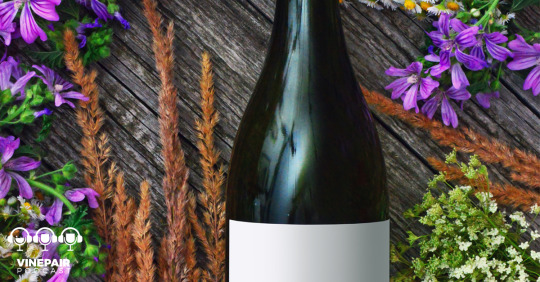
There’s an odd fact you might have noticed about beer, wine, and spirits. Unlike virtually every other consumable, the U.S. government does not require alcohol producers and manufacturers to disclose the ingredients or nutritional facts of their product. Furthermore, the number of beverage alcohol producers that do so voluntarily is vanishingly small. As with many alcohol-related laws, this labeling exemption dates back to the end of Prohibition. It persists because alcohol is not regulated through the Food and Drug Administration (FDA), but instead through the Alcohol and Tobacco Tax and Trade Bureau (TTB).
That lack of nutrition labeling has gone largely unchecked until now, when changes in the industry and interests of American consumers could very well bring the era of opacity to a close.
The rise of hard seltzer and its aggressively promoted low-cal, low-carb lifestyle have begun to force the hand of more traditional beverages like beer, while the “clean wine” movement attempts to capitalize on a lack of transparency in the wine industry. The European Union will require ingredient labeling by the end of 2022. Will these forces be enough to overturn decades of inertia? Will mandated labeling privilege large brands over small producers? That’s what Erica Duecy and Zach Geballe discuss on this week’s episode of the VinePair Podcast.
LISTEN ONLINE
Listen on Apple Podcasts
Listen on Spotify
OR CHECK OUT OUR CONVERSATION HERE
Zach: From Seattle, Washington, I’m Zach Geballe.
Erica: In Connecticut, I’m Erica Duecy.
Z: And this is the VinePair Podcast. Yes, we are without Adam but we are not without ads. This podcast is brought to you by Cognac USA, Speedrack, and VinePair. We’re collaborating to offer 10 $1,000 cash stipend prizes exclusively for professional bartenders. You can enter by creating an original Cognac cocktail and you can even receive bonus points through viewing Speedrack’s Instagram live videos. Visit cognacconnection.com, that’s cognacconnection.com, for details and to enter. The deadline is Aug. 31, and that’s cognacconnection.com. The campaign is financed with aid from the European Union.
Z: Erica, what’s your favorite Cognac cocktail?
E: That’s a good question. If I’m going to drink Cognac I’m probably going to drink it straight. It’s one of those things that if you really enjoy it, that’s one of the ones to savor.
Z: I think there’s a place for the higher end — and trust me, Cognac goes really high end really quick — but the higher-end stuff I wouldn’t mix in a cocktail. Sazerac, which is often traditionally made with Cognac, I think is a delicious cocktail. I’d be curious to hear your thoughts on this. A couple of years ago, I created a drink for our bar program at one of the restaurants that I was running and it was my take on Vieux-Carre, which is a split-base cocktail with Cognac and rye. I did that but instead of Bénédictine, it had Strega in it, but I think the Vieux-Carré is a fun one even if it’s not a pure Cognac cocktail.
E: That is a delicious cocktail. In the winter especially, I just really love the idea — even if I don’t have a fireplace — of sitting around the fire with a snifter of Cognac. But really, I just use a rocks glass.
Z: You’re telling me you don’t retire to your hunting lodge every winter?
E: I’m getting there, not quite yet.
Z: When this podcast finally blows up. I have another question for you before we get into today’s topic. We were debating what to discuss this week, and maybe we’ll get back to this in the future, but I was curious, you’re the parent of a couple of kids who are older than my son and right now, my son’s interaction with alcohol is basically learning a surprisingly large number of grape varieties because we teach them to him. His favorite is Roussanne, in case anyone is wondering. But how do your kids react to what you do for a living?
E: I think they think it’s pretty interesting, although my husband has an even more interesting job because he’s playing with clay all day, so nothing really can compare to that. However, they do seem to think that it’s interesting that I’m tasting a lot of wines and tasting spirits and thinking about cocktails, and sometimes making up recipes. … And people seem to get a lot of enjoyment when they’re at our house because I’m always whipping up something, I always love to have a special cocktail that I’m serving if people come over, or, I’m pouring wines. So I think parties at our house, and small gatherings, tend to be pretty festive. I’m always interested in, for example at the end of a meal, pulling out a couple of bottles of Armagnac or Cognac or something. So people are always tasting and testing and talking about it. And the girls do love smelling in the glass. I think one of my proudest moments was when my daughter Gia was about 6 years old and I asked her to smell into the glass of sherry, and she told me that it smelled like nuts! I was so proud of her, and she was very quizzically looking at me like, “Yeah, it tastes like nuts.”
Z: That’s awesome. I can’t believe this never occurred to me before but it feels like the final form of yours and John’s relationship is opening the world’s fanciest pottery, painting, and wine sipping extravaganza. I’m sure you have seen those advertised, [where you] go paint some pottery and sip wine, but yours would be the fanciest of them all.
E: That’s pretty much our house all the time. They tend to have a good time, and we do open up the studio and have little parties up there when we’re not in a social distancing period — and so they are playing with clay and I’m making cocktails. I love to do a Spritz bar when we’re up there. There’s a lot of fun stuff to do and for kids, they’re pretty young so we’re not talking too much about responsibility around alcohol yet. I don’t think they’re quite there yet from a standpoint of really understanding the depth and nuance of that. But certainly, we do not have any sloppy behavior around them. I think that’s our way of presenting what alcohol looks like when consumed in a responsible manner.
Z: That is good. As you probably know, the sloppiness is a trickier thing to manage when you have a young child. There’s no way that goes well for anyone, even if you were tempted to do it. Dealing with a 2-year-old with a hangover is really miserable. Been there once or twice, sadly.
E: Exactly. I’m getting a little old for hangovers, I think.
Z: This would have been a natural segue if we were talking about hangover-free wine, but we are going to be in that general vein, so we might as well move on to the topic for today’s show. I think this is a really fascinating conversation that, hopefully, we’re going to have here, which is about the increased scrutiny potentially being paid to not just wine but all beverages and labeling. Erica, I think you could set the ground a little bit better than I can in this context. I’ll just say, one of the things that are important to understand as we get into this conversation is that in the United States, alcohol has traditionally been exempted from the rules that surround most other consumable products in terms of the requirement to disclose nutritional facts and ingredients. And there’s a real conversation going on in the industry about whether it’s time to give up that special exemption and be more upfront about what is in a bottle or can.
E: I think one of the big things that we need to realize is that virtually everything you can buy at a grocery store or in any other part of your life — at chain restaurants, for example — everything comes with a nutrition label these days. At chain restaurants, you have calories listed on menus, on the soda you’re drinking, any sort of other drinks, except for alcohol, it’s labeled. Why is alcohol exempt? The short answer here is that it’s a legacy of Prohibition. Alcoholic beverages aren’t regulated by the FDA, like everything else, but instead by the TTB, the Alcohol and Tobacco Tax and Trade Bureau, and they don’t require nutritional labeling. Consumer advocates have been pressuring the agency for years to add this labeling but it never seems to happen. Most recently, last year the modernization of the labeling and advertising regulations for wine, distilled spirits, and malt beverages Notice No. 176 was up for review and they did make some changes to the laws around labeling, but it did not concern nutritional labeling. The TTB said in April of this year that they will revisit those labels at a later time. But I think the real thing that we’re finding is that consumers want to know what they’re drinking and because we have created this environment of opaqueness around what is in the bottle across beer, wine, and spirits, that’s done two things. First, it’s turned many consumers off of these products onto other categories. Hard seltzer is one that has adequate product labeling, and I think that is one of the things that has really led to the rise of hard seltzer. Second, there have also been these dubious marketers, these clean wine marketers, these fitness marketers, making all sorts of claims about their wines that are verifiably false that we have fact-checked and have published articles about. Yet it’s because of this environment of opaqueness that those claims have now risen up.
Z: I think this is something that maybe more people in the beverage and alcohol space should have seen coming: That if you’re not transparent, people will use that lack of transparency against you. Whether they’re doing so dishonestly or not, it doesn’t really seem to matter. You pointed out this whole issue with clean wine companies and this has come up a few times in the past, but as one of the people who wrote one of those articles, I will say that it was remarkable going down this rabbit hole of what some of these claims that are made, and really a lot of it is an implication that “our wine doesn’t have these ingredients in it, we don’t use these additives,” so, therefore, your inference as a consumer, especially not a super well-informed one, is “everyone else must be using these.” Because if you’re making a point to say “we don’t put ferrocyanide in our wines,” which no one does, it’s not even allowed anymore, I don’t want that and the implication is that every other wine has that. But again this is where wine, beer, and spirits have made themselves vulnerable. I will say one of the things that I really want to get into in this conversation, and Erica, I’m curious [about] your thoughts on it: I do think there is a fundamental difference between wanting labeling that gives consumers actionable information, like how many calories in a serving, versus information that I’m not sure is all that useful. One of the wineries that does label in terms of ingredients is Ridge. Ridge is a great winery and makes exceptional wine, but if you look at that label, I think even for a wine professional, it’s pretty opaque. You have to know a lot about how wine is made to understand if what they’re talking about here is normal. Is it reasonable that they add nutrients to the yeast? Or is it normal to water wine down? For me or you as professionals, those words mean something, but to a consumer I’m not sure that a list of ingredients is going to help them at all. Maybe it will, but I think the calorie thing is one side and the specifics about what is in the products are another.
E: From my perspective, I think that as much transparency as possible is the way to go, and it’s really about educating consumers. The reason that I am for more transparency is that what you don’t say can be used against you. A good example from Ridge would be calcium carbonate. People might not know what calcium carbonate is, and they may want to look it up or go to Ridge’s website where you can see that it’s saying small additions of this compound are used during fermentation to moderate unusually high natural acidity. So I think if you give an explanation and you are stating why something would be used in a wine, then that takes away the ability of marketers to use it against you. I think that’s the unintended, unrecognized thing that people in the industry just didn’t anticipate. I think people in the industry thought for a long time it’s not going to be a good idea for us to label because if we start putting calorie counts on things, then people will drink less. There are also practical concerns for winemakers around cost. Having to test all these bottles every vintage has a cost to it. But when you don’t do those things, that’s when you’re opening yourself up for bigger problems where these unscrupulous marketers come in and start to take all of your business away because they’re saying “we don’t do all of these shady things,” when really not much of what is happening is very shady at all.
Z: I think it’s also important, as much as possible, to differentiate between two important things with ingredient labeling. It’s sometimes muddied in even professionals’ minds, let alone consumers’ minds, the unfortunate history of wine, if you stretch back far enough, with things being added to wine or wine being adulterated in various ways that were not only disingenuous — producers in Burgundy blending in Rhône wine or North African wine to bulk their wines out, the same thing with producers in Bordeaux, to the Austrian scandal of glycerol in wines in the mid-’80s. And these are things where the additives can be potentially toxic or harmful. With modern winemaking, the area we’re talking about most often is pesticide residues in wine, that being a relatively small concern with most wine but it is a possibility and something I think I understand people’s interest in knowing whether that’s something that could possibly be in their wine, versus a lot of the additives, even the ones that wine connoisseur might turn their nose up. Like mega purple, which gets a terrible rap, and I think there’s a philosophical issue with using grape concentrate to make your wine seem more colorful and richer in flavor, but it’s not at all harmful. It doesn’t hurt people and it’s probably the only way that a $5 bottle of California Cabernet can make it to a store shelf. I don’t personally have a lot of issues with it like “this is bad for the public.” I think if it was disclosed on the label it might change people’s purchasing decisions, which probably is a good thing, but I guess I think that is important to understand what information we are trying to provide to people and how that will affect things. Anything that involves a potential health risk is hugely important to disclose. I’m not saying that I don’t think winemakers should be forced to disclose when they modify their wine in a variety of wines, but I think it’s important to also push back on the notion that doing that is harmful. It might not represent the pinnacle of winemaking, but it’s not bad for you in any real way.
E: That’s true. And I think it is a reality that people do not have any idea how many calories are in the alcohol that they’re drinking. I was looking at some different studies, and one public health researcher found that most Americans are drinking 400 calories a day of alcohol. When you think of an average glass of beer or wine it’s probably around 150 calories, and it’s much more for cocktails, so I think there’s a health concern that is legitimate — of people wanting to know how many calories are in their wine — and that’s why these hard seltzers and RTDs have been so successful. Certainly there’s the convenience as the appeal, but secondarily, you can really keep track of how much you’re drinking. If you look at a lot of the different surveys that have been done about labeling, you’ll see the Center for Science in the Public Interest, they say 94 percent of adults support alcohol content labeling, 91 percent support ingredient labeling, 89 percent support calorie labeling. These things are going to be coming up more and more. And the brands that get on board quicker with transparency are going to be the successful ones. Just looking at the E.U., for example, in the European Union by the end of 2022, you have to provide nutrition and ingredient information if you’re going to be doing business in those countries. Already there, Diageo, Treasury, AB InBev, have already started to provide ingredient and nutritional information on a voluntary basis before that date on a lot of their products. This is going to become a bigger and bigger issue, especially at the end of 2022 [when] it is required. I think then, a lot more American consumers are going to be requesting and requiring this. Additionally, I think that the brands that do get ahead of this are going to see better sales results. It may sound counterintuitive to say that if people are looking at the calories and ingredients, they’ll choose my product over another, but I really do think it will happen because it’s that type of transparency that has proven so effective for these clean wine marketers. When I say “transparency” let me put that in air quotes because certainly what they are doing is not transparency, it is pseudoscience and pseudo-transparency, but they are coming across as the ones who are taking the high road on this and providing that type of information that consumers are looking for. So once brands that have integrity and are doing marketing on the up and up are providing this level of transparency to their products, it’s going to take the wind out of the sails of a lot of the clean marketers and fitness marketers whose claims will no longer stand up.
Z: I think it’s interesting to think about who will benefit in a landscape where ingredient and nutritional fact labeling is a staple of the alcohol industry. My concern, and you mentioned this a little bit in the past, was that it will disproportionately advantage big companies. You mentioned the big multinationals that are already doing this on a voluntary basis in the E.U., as you said, getting this kind of testing done is not free and it may not even be cheap. If you’re a small winemaker, a relatively small winery, brewery, or distillery, that added cost you would have to weigh the benefit it might derive from the cost it will inflect, and each producer will make their own decision about that. It’s one thing for a big multinational to have its own lab where it can easily do this as part of everything else that they do as part of the business. I’m concerned that this will disproportionality benefit the companies that really don’t need more help at the moment, and also, the other question I am curious to hear your thoughts on is, people say they want ingredient and calorie count labeling, but how much of that 90-ish percent of the population will those numbers actually drive behavior? I think there’s a lot of people who would say, and do say, they want calorie counts on fast food menus but when they go through the drive-thru does that calorie count affect their purchase decision at all? Maybe at the margins, but most people are going to get a Big Mac regardless of whatever the calorie count says, if that’s what they want. So I think that… it doesn’t hurt anyone to have that information in the abstract, but I am dubious that for most consumers they’re going to pick up three bottles of wine or three beers and the determining factor is going to be the calorie count. I think it’s going to be what it tends to be already, which is, what does the label look like? What does it say on the front label? What is the price? That’s going to be how people make their decisions, and maybe calorie count is the tiebreaker for some people, and so fair enough. But I think, as you said, the other thing about this is, there’s not a big difference in a lot of these categories. Most dry wine is going to be in the same narrow range of calories per serving. Beer has a bigger range because of differing levels of alcohol — much more so than wine — spirits to some extent as well, but I think — it’s not a bad thing — but I’m not sure it’s going to be the holy grail of consumer independence and freedom that we might sometimes think it is.
E: For the concern about wineries having to do it every year, I would say that there very well could be some sort of compromise. For example, back in 2017 when the FDA was requiring menu labeling, the Brewers Association said it’s going to be a huge burden on small craft producers to be able to do these calorie counts, so what if we work with the FDA to create some sort of guidelines on what is acceptable around these categories of beer styles instead of individual breweries having to do it themselves, and the FDA agreed. So there are workarounds. I think what if they TTB said, what if you have to do it every five years for your wines. That makes it much more manageable so I think there could be ways around having to test wines every single year. Or maybe it’s when a new product comes onto the market, and every year the alcohol changes by more than a percent and a half, I don’t know what it is but something like that could work. To the second point, I think for the people that are making decisions based on calorie counts, they’re doing that already and they’ve already turned off wine. I was just on Twitter with someone today who sent me a photo of a brand called Fit Wine and it was marketing on calories and I was joking and saying it’s essentially the Walking Dead. These brands are coming out of the woodwork, get your swords ready, you need to be like Daryl Dixon out there slaying zombies because they are coming out of the woodwork and if the TTB does not step in it’s only going to get worse. But the bigger point is we’ve already lost the people that are making these calorie count decisions. If their decisions on what they purchase are based on what’s on the label, they haven’t been purchasing wine but maybe they will come back to wine if they do see calorie counts on there. That would be my perspective. I think these sunshine initiatives that shed light on where there is opaqueness there may be some skeletons in the closet but probably not that many and when you are being more transparent and providing consumers with a level of transparency there’s so much evidence to show that’s what consumers are looking for and I think that is the way of the future for wine, beer, and spirits
Z: I’m a bit mixed in my thoughts on this. This comes back to the conversation about ingredient labeling about healthy wine and products and I think to some extent a thing that gets missed is that alcohol is not inherently a particularly healthy thing. I think that there are ways to which alcohol consumption can be a part of a generally healthy lifestyle but the idea that alcohol consumption is the healthy part of your lifestyle is a ridiculous claim and is the thing that TTB and others need to push back against. Anyone that is attempting to intimate or flat-out state that somehow drinking these wines are somehow good, the whole French paradox, the Mediterranean diet, there’s a lot of pseudoscience in there. And the reality is alcohol is delicious in many cases, its enjoyable, the effect it has on our brains is something that most people find enjoyable at lower levels but is not inherently healthful and so I recoil at the idea that what we should be trying to do is designing products that have a label that makes people want to buy them but it is this idea of Frankensteining a product that gets you below a certain calorie count and doesn’t use certain ingredients but is so divorced from what to me is the pleasurable part of drinking which is not just taste but also the idea of some sense of a through line from a place to a beverage. I just worry that we’re going to end up in this sort of endless quest to create this lowest calorie whatever with the fewest ingredients that has some flavor but really is just an engineered product that meets market demand. And I’m not naive, there’s a lot of wines, beers, and spirits out there that do exactly that and some are delicious and they have a place for sure, but I worry — and in wine in particular — if too much embrace of transparency ends up privileging those where all they have is transparency, there’s nothing there. It’s just a clear window into a factory or something.
E: I think that’s a fair concern and from my perspective, I don’t want to drink those wines but I also don’t want to eat fat-free chips or sugar-free cookies. I am a consumer that loves full fat, full-flavored, give me all the promenades, give me all the backstory, that’s the type of consumer I am, but I think I’m unfortunately less and less the consumer who is looking for all of that full-fat, full-experience type thing. I think it’s just a reality of where we are in the consumer landscape that every other category has some degree of label transparency and this category does not and now it’s being used against the category and consumers are turning off. So I come to this argument as someone who loves the wine industry and the spirits industry, beer I know less about, but wine, in particular, I am legitimately concerned about the future of the wine industry. If some degree of labeling transparency does not become more embraced voluntarily, or enforced if that’s what it needs to be, then more and more consumers are going to turn off of this category because that’s what they expect.
Z: I think I can’t and don’t want to argue against that. It’s an unfortunate reality but that’s what it is. Before we go I’m going to read our Cognac Connection ad one more time. If you are a professional bartender and are interested in entering the Cognac Connection challenge you can win a $1,000 cash stipend. The deadline to do so is Aug. 31 and to do that you go to cognacconnection.com to enter you can also find more details there. Erica, we made it through without Adam. Somehow I feel like we didn’t even mention Seattle until the last minute. He’s going to be so disappointed, I’ll edit in some random clips of us saying Seattle and talking about the weather just to keep up appearances. Adam will be back next week from his well-earned vacation and we will be back waiting for you then. Talk to you later.
E: Talk to you then!
Thanks so much for listening to the VinePair Podcast. If you enjoy listening to us every week, please leave us a review or rating on iTunes, Stitcher, Spotify, or wherever it is that you get your podcasts. It really helps everyone else discover the show. Now, for the credits. VinePair is produced and hosted by Zach Geballe, Erica Duecy, and me: Adam Teeter. Our engineer is Nick Patri and Keith Beavers. I’d also like to give a special shout-out to my VinePair co-founder Josh Malin and the rest of the VinePair team for their support. Thanks so much for listening and we’ll see you again right here next week.
Ed. note: This episode has been edited for length and clarity.
The article VinePair Podcast: Making a Case for Alcohol Label Transparency appeared first on VinePair.
Via https://vinepair.com/articles/alcohol-label-transparency/
source https://vinology1.weebly.com/blog/vinepair-podcast-making-a-case-for-alcohol-label-transparency
0 notes
Note
Does Lumerde have any holidays like Nightmare Night?

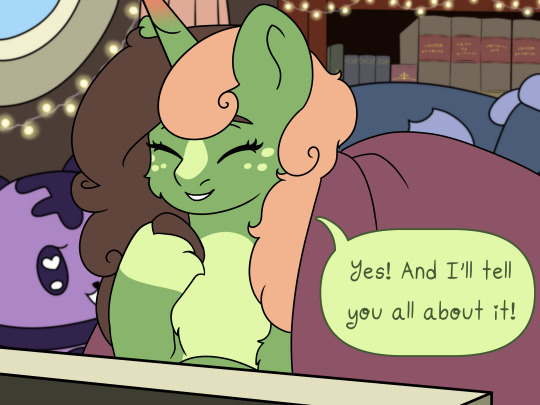
Novi sent by @splungecoyote and @briarborealisart
In LHK, we have a week-long event called the Spirits Risen Festival. I'll put all of the information about it below the cut, if anyone wants to know all about it! It starts on the 24th of October and ends on the 31st. October 31st is called Spirit's Eve. Of course, at the end will be a TL;DR rundown of events and practices, but I highly recommend reading as much as you can.
🔓 The Spirits Risen Festival will take place from October 24th to October 31st. Any events pertaining to the Spirits Risen Festival, Nightmare Night, or Halloween will be answered during this window. Stay tuned for more event information! -Mod Doe <3
The History
Haustonne
Haustonne was the first created of these traditions. Each year, during the last week of harvest (now established from October 24th to October 31st), ponies would celebrate their bounty through festivals.
The first day is a day of work, where every pony would gather together and assist farmers with collecting their crops. The second day, new crops are planted to hibernate during winter and begin their blossoming through spring. On the third day, the crops would be sold or traded throughout the village (and neighboring villages) and food not being used for the feast would be preserved. The fourth day was a day of rest, where ponies were able to lounge and relax themselves.
The fifth day was spent on more work, preparing food for the upcoming feasts. The sixth day was a small feast, where ponies would eat with and appreciate their families. On the seventh day, ponies would spend partying and feasting together while thanking their respective deities for good weather. This deity depends on each village, of course, with many thanking Hestia, Solaris, and the stars themselves. However, a select few gave their thanks to Astraea, Celeste, other asterin/deities, or no one at all.
On the seventh day, because it was held later in the night with food outside, would attract many critters looking for food to steal for the upcoming winter. Many ponies took to dressing in costumes to the festival so they could scare away the animals and protect their food.
Spirits Risen Day
Spirits Risen Day was a tradition started in the 12th century. During the autumn months, foals were very easily frightened during the night due to the falling leaves and dropping temperatures. To ease their foals, a village previously called Sunrise (now known as Rosewood) took to celebrating death and spirits during the last day of Haustonne. This eased their foals’ fears, and taught them to respect the ponies who passed before them.
Some ponies from a neighboring village, Bellen (modern day Belleside), took a different approach. On the last day of Haustonne, they would dress as animal-like monsters to scare their foals in bed before quickly removing any masks to reveal themselves. This turned the scare into a fun game for some foals, but a worsening effect for others.
These two traditions meshed, with the sixth day of Haustonne becoming Ancestor’s day, and the seventh becoming Spirits Risen Day. As a compromise, rather than scaring the foals in bed, they would take to spooking them during the party itself where energy was already high, while comforting the foals once the party ends. These practices spread throughout the kingdom, and eventually the entire nation.
Modern Day Practices
Spirits Risen Festival
The Spirits Risen Festival is a traditional autumn festival, celebrated throughout the Lunar Heavens Kingdom for generations. Each year, every city and town opens a Spirits Risen market. These markets are open to the public, where anyone can hold a stand. This is a very profitable period for small businesses and farmers, with sales skyrocketing in the market. Many vendors choose to also offer costume material, toys, trinkets, and generally spooky, death-related merchandise.
Larger cities will also open a carnival, with more merchandise, rides, games, and food. The admission prices vary, but the first day is always free admission. Attractions are geared towards the fear factor, and many young foals are turned away from larger, scarier attractions. It’s also common for “scare actors” to wander around after sunset and frighten attendees.
Ancestor's Day and Spirit's Eve
Feasting is still a factor, with Ancestor’s Day landing on October 30th. However, more focus is usually centered around Spirit’s Eve on the 31st, where foals (and sometimes older ponies) are off critter crawling.
The purpose of critter crawling was originally to mimic the animals on the last day of Haustonne. Ponies dress as animals (or any other costume of their choosing) and go door-to-door, visiting anyone with decorated doorways. They knock on the door, and demand the resident’s harvest. The phrase depends on location, but the most popular are, “Critters are here!” and, “Share the feast with hungry beasts!” (shortened to “share the feast”).
Residents have two options: they can either give the crawlers some of their candy, or “scare them away.” Many who participate have taken to preparing a haunted-house experience to scare the crawlers away, and others have widened their array of “harvest” options. Doorway decorations have evolved to be coded for more experienced foals-or foals whose parents tell them. A door with spider webs usually means a scare (if the spider webs have fake spiders and bugs in them, it means intense scare), and a door with pomegranates (a fruit symbolizing death, fertility, and linked to Hestia as her favorite fruit) meant treats. Different fruit colors have more recently been thrown into circulation, with red pomegranates being normal treats and black pomegranates being treats safe for all ponies to eat (or non-food treats).
November 2nd is a national holiday, known as “Spirits Sunset,” for rest after the festivities and cleanup. Festivities tend to bleed over to November 1st, due to the fact that many Spirit's Eve events take place past midnight.
Summary
October 24th-October 31st: Spirits Risen Festival
Small businesses and farmers opens stands at local markets
Various fairs and attraction open for the week, typically with a spooky theme
Sometimes actors dressed as monsters will wander the parks after sunset
October 30th: Ancestor's Day
Ponies feast with their living family members and take time to remember those in their families who have passed on
October 31st: Spirit's Eve
Critter Crawling/Parties after sunset
Critter crawling is usually reserved for younger ponies, but sometimes older ones participate
Ponies go door to door, with "trick-or-treat" phrases varying on location
Many doors are coded in their decorations, with different kinds of decorations noting what any critter crawler should expect
November 2nd: Spirits Sunset
Day of rest after the festivities
Also useful for extra clean up that hadn't been completed the day prior
#spirits risen festival 2022#doe amberwood#ask narrator doe#story bits#mod speaks#answered#mlp#mlp ask oc#mlp ask blog#asteros au#unicorn#pony ask blog#pony#mlp g4#ask-narratordoe#splungecoyote#briarborealisart#halloween 2022#spooky season
50 notes
·
View notes
Text
Small event announcement!!
From October 28th to October 31st, Narrator and the gang will be visiting a Spirit's Risen Carnival! This means spooky costumes, free candy, and even a haunted maze.
Tag me in a post of your ponies dressed in their most fun (or spookiest) critter costumes by the end of the 27th (PST), and I'll include them partaking in the festival ^^ I'll be reblogging every costume post I'm tagged in! You can submit as many different ponies as you like, and feel free to DM me with questions. Just keep the costumes SFW, please!
(If I run out of ponies, I may-or-may-not nab a few extras from other Halloween events. Any costume is accepted, but creatures/animals preferred :D) -Mod Doe <3
#mod speaks#spirits risen festival 2022#ask narrator doe#mlp#mlp ask oc#mlp ask blog#asteros au#ask-narratordoe#event#event post
41 notes
·
View notes
Text

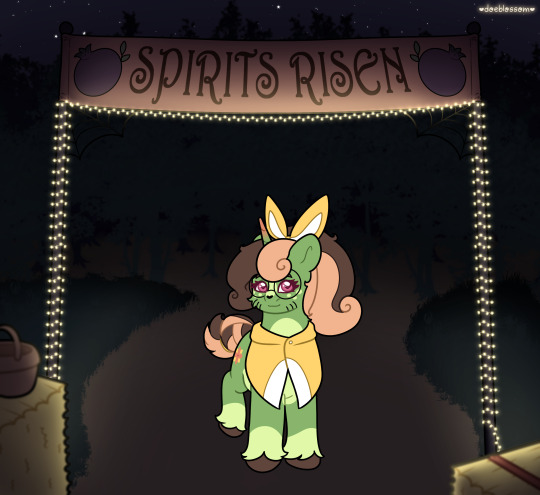
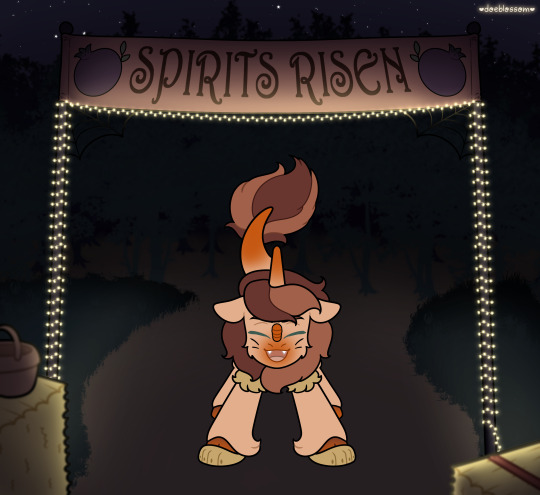
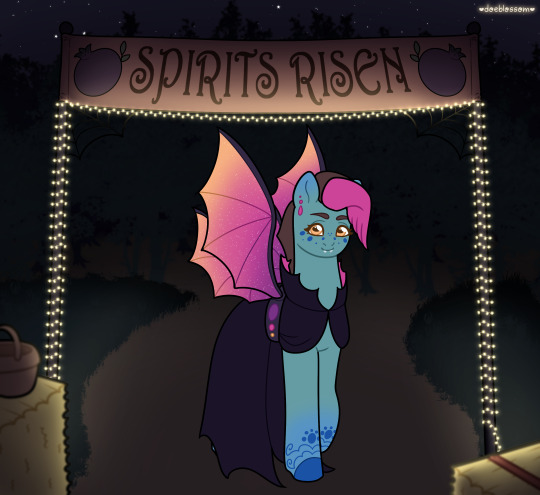
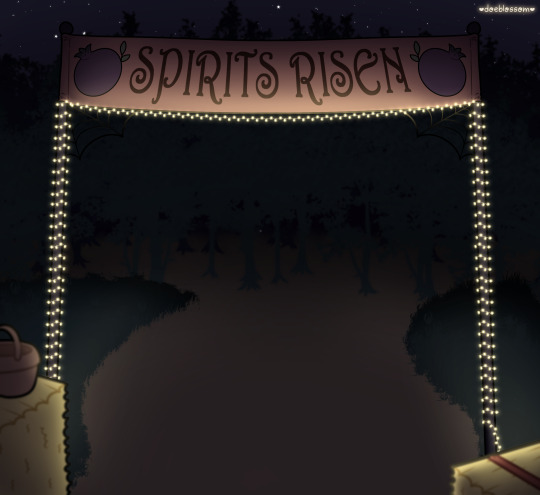
We've got costumes, and a fun background! With some individual shots as well. I'll be trying my best to draw some more costumes in this style, since I wasn't able to follow through with that comic series.
To @ask-shutter-ghost and @ask-a-grumpy-melon, these three will be my contest entry! I'm not sure if I'm only allowed one entry or multiple, but if it's only one, Doe is my entry. -Mod Doe <3
#mod speaks#bonus art#spirits risen festival 2022#halloween 2022#nightmare night 2022#doe amberwood#jasper andreus#borealis lightshine#costume contest#nightmare night
34 notes
·
View notes